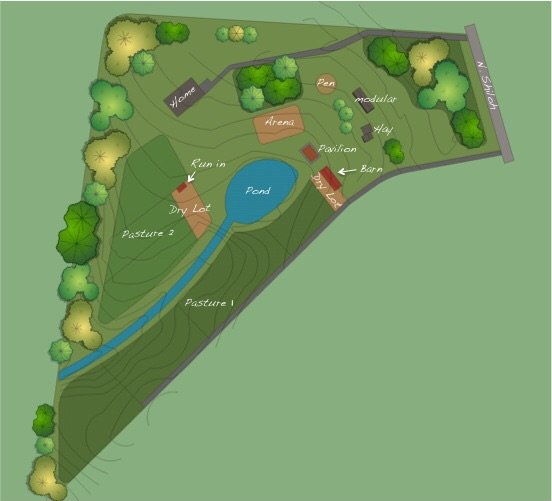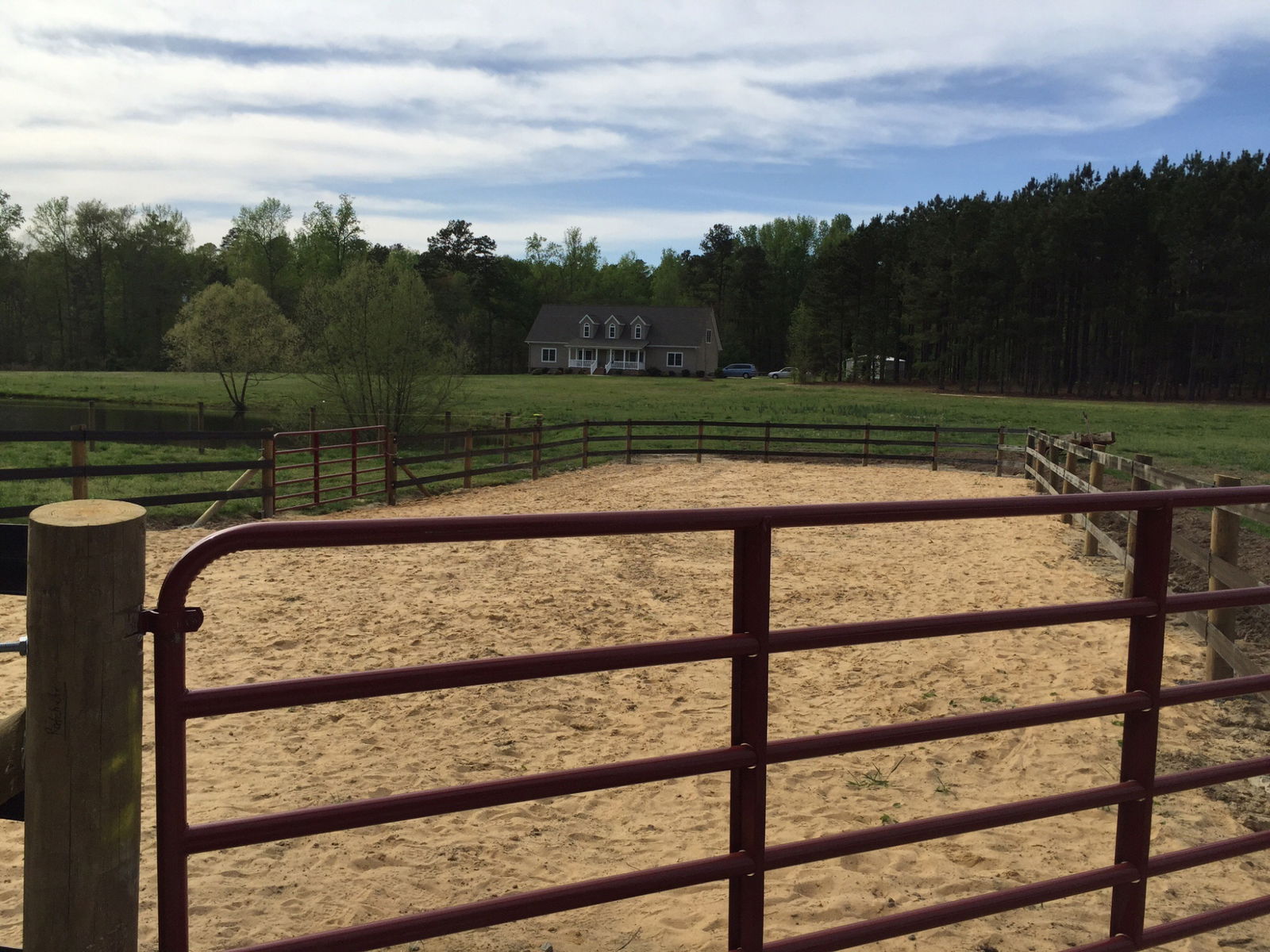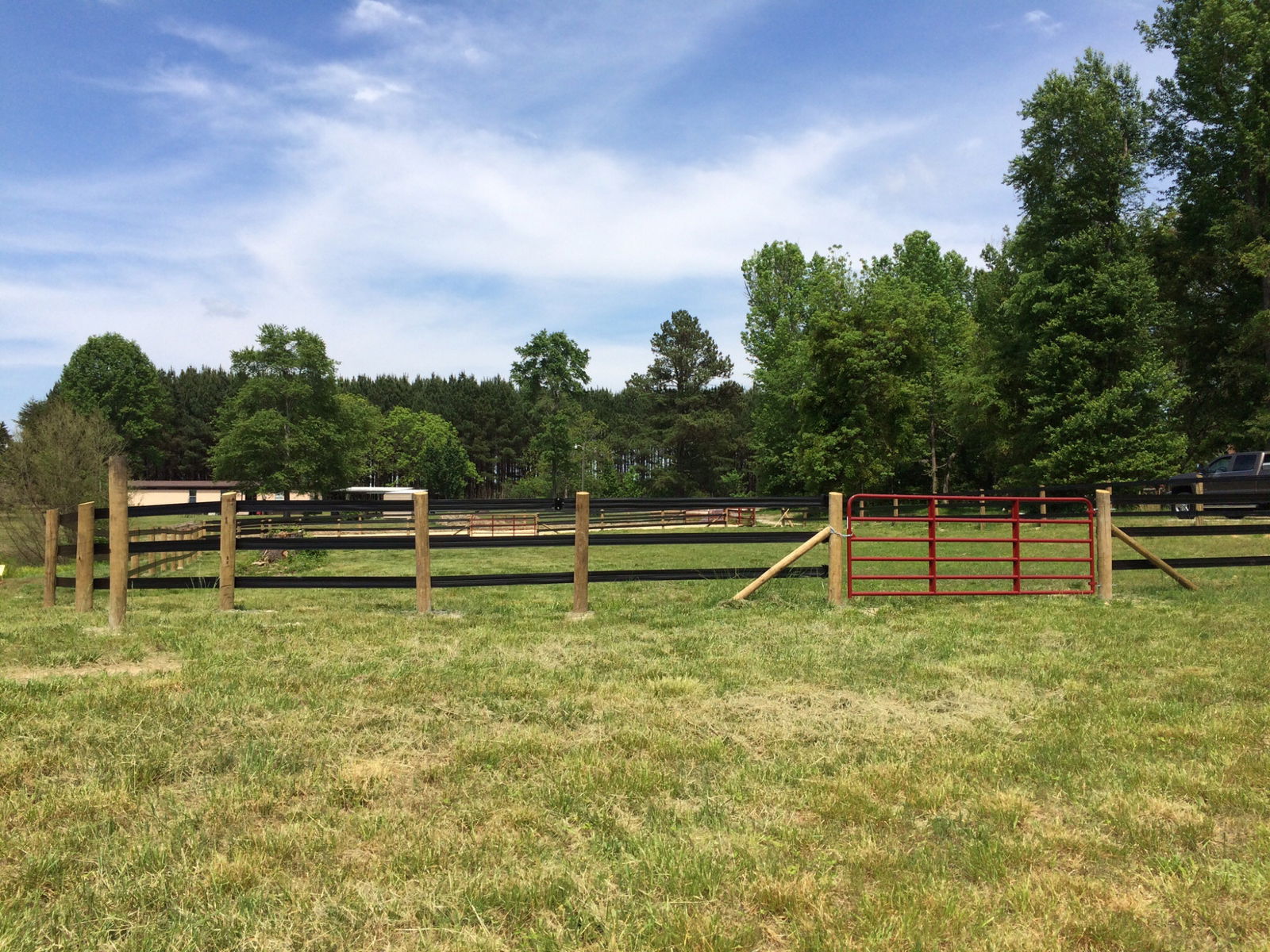Dry Lot, Paddock, Pasture...What??

Perhaps you've seen the pictures on social media, come out on a volunteer work day, or heard us mention it in conversation, but at some point, it's likely the words Dry Lot, Paddock, and Pasture have popped up. We have had several questions as to what exactly are those things and why do we need them in the manner we have laid out on the property.
Allow me to briefly define the terms as they relate to Bright Side. A dry lot is an area with no grass and some sort of good footing to help manage horses for multiple reasons. When it's very rainy and muddy, horses can tear up a field and destroy the grass, so we use a dry lot to keep them off those fields and out of the mud. Mud can also cause some health issues in horses. A dry lot can also be a great resource for horses with metabolic problems (keeping them off the sugar-rich grass for periods of time can help them). Ours will be used to manage our fields and keep the horses from tearing up the grass in wet spring and fall times, and it will be used as the base of our rotational system for the paddocks. To keep the horses from overeating sections of the paddocks, we will rotate them through different fields at different times, but they will always have hay and water accessible in the dry lot. This will keep them moving and healthy, and it will help make our land sustainable for years to come.


A paddock is a smaller enclosed field of an acre or less. Sometimes paddocks are for individual or limited turnout, or they can be used as a subdivision of a larger pasture in order to plan for rotational grazing. In order for grass to bounce back after grazing, a pasture needs to rest for at least 7 days. So, by using smaller paddocks, there are more options for rotating fields and creating healthier pastures.
A pasture is a larger tract of land that is typically consists of more than 1 acre. For Bright Side, we talk about a pasture system. The pasture system is made up of the dry lot and several paddocks, and it includes a plan for the horses to have access each pasture by a laneway and a separate gate (only one of which is open at a time, creating a rotational grazing system). As briefly mentioned before, the dry lot is the foundation to making this system work, and the key concept is that water and hay is provided only in the dry lot. The horses must therefore walk between the dry lot and open paddock(s) to graze or to have a drink, encouraging healthy movement. The main source of shelter (which in our case will be a run-in shed) is also provided in the dry lot. When it's time to rotate pastures, we just simply close one pasture gate and open another one. Having the water and shelter in the dry lot reduces the time horses are grazing out in the paddocks, helping to maintain well-vegetated, healthy pastures. Check out the master plan below to get a visual on the layouts.
